The much anticipated baby-Thruxton, the Triumph Thruxton 400, has been launched in India at Rs 2.74 lakh ex-showroom.
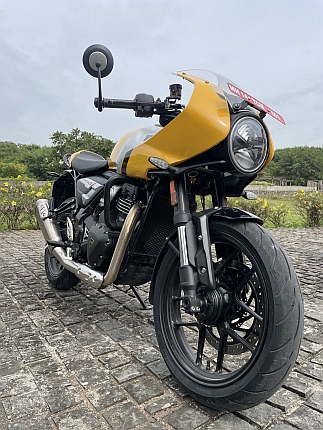
Story: Salman Bargir
The Triumph Thruxton 400 has finally been launched in India. With the larger Thruxton R retiring last year, the Thruxton 400, based on the Speed 400, will now carry forward the cafe racer mantle for Triumph. Inspired by its much bigger precursor, the Thruxton 400 gets a similar cockpit fairing, clip-on handle bars and pillion seat cowl. The modern classic design helps it stand out not only among Triumph’s 400 series family of motorcycles but also apart from other motorcycles on the road. Triumph’s triangular logos are placed on the indents of the redesigned 13-litre fuel tank. It has a Monza-styled fuel cap and a third of the tank has a diagonal band finished in an aluminium silver shade.
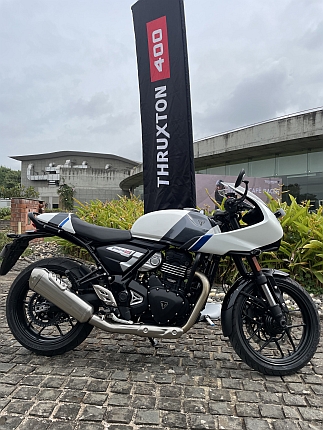
Not being just a cosmetic upgrade, the Thruxton 400 is equipped with a modified 400-cc TR Series engine, making it the most powerful member of Triumph’s 400-cc family. The engine now redlines 1000 rpm higher, at 10,200 rpm. It achieves a peak power output of 42 hp at 9000 rpm vis-a-vis the Speed 400 UG’s 40 hp at 8000 rpm. While the maximum torque is an identical 37.5 Nm, it is now available at 7500 rpm, 1000 rpm higher than the Speed 400’s 6500 rpm. The engine delivers over 80 per cent of torque from around 3500 rpm and is mated to a six-speed transmission with a torque assist clutch.
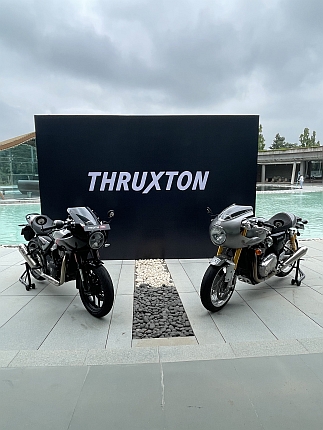
In post-war Britain, a group of young riders known as the ‘Ton-Up Boys’ would modify their motorcycles for more speed and agility, specifically to reach the ton (100 mph). They would race between transport cafes with the goal of completing a circuit within the time a specific song ended on the jukebox at the cafe, thus earning them the name ‘cafe racers.’ The Triumph Thruxton, then, was a popular choice among them. It was also the first production motorcycle to lap the Isle of Man TT course at over 100 mph.
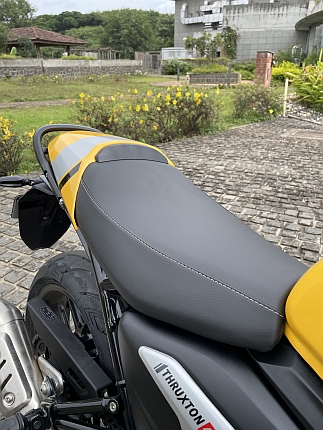
Consequently, a deliberate effort has been made so that the Triumph Thruxton 400 can achieve a top-speed of 161 km/h (100 mph). Along with the enhanced engine the rear sprocket now has two teeth less, which also enables lower gearing. The acceleration too is quicker: 0-100 km/h is attained in a claimed 6.7 seconds, a second quicker than the Speed 400 UG. The brakes are similar, with a 300-mm disc at the front with four-piston radial callipers, sintered pads and dual-channel ABS. The rear is a 230-mm disc. The motorcycle also gets a redesigned radiator for optimised heat dissipation.
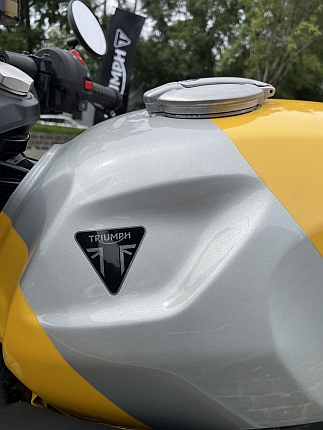
Changes have been made to the chassis too, and a new sub-frame at the front holds the cockpit fairing in place. The clip-on handle bars are narrower and positioned lower than the handle bars that come on the Speed 400 UG. The steering geometry has been altered and the rake angle is now at 24.5 degrees, tighter than the Speed 400 UG’s 25.1 degrees. To improve agility, the wheel base has been shortened to 1376 mm and the redesigned rear sub-frame helps the motorcycle sit lower. The seat is placed marginally lower at a height of 795 mm for a more committed seating position. The foot pegs, front as well as rear, have been repositioned to allow for an aggressive riding stance. At the front it gets a 43 mm USD fork with retuned damping and 140 mm travel; and at the rear, a monoshock with 130-mm travel, both to account for the increased weight.
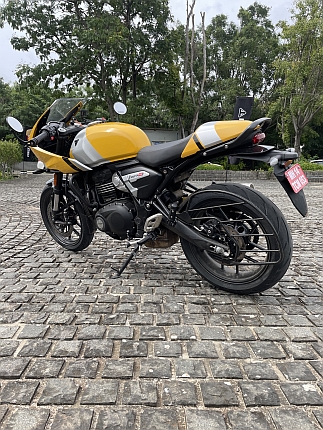
Switchable traction control, ride by wire throttle, immobiliser, slipper clutch, and upswept hydroformed brushed silencer are some of the features the Thruxton also gets. It is available in four colour options, Lava red gloss, Pearl metallic white, Phantom black and Metallic racing yellow. All things considered, the motorcycle looks to be a concerted effort. We have already ridden the Triumph Thruxton 400 so stay tuned to our socials for our first impressions on this, the fastest Triumph 400 so far.
Also Read: Interview – Saimah Ajaz Baig – ‘You have to chase your dream; you cannot just sit back’


Leave a Reply